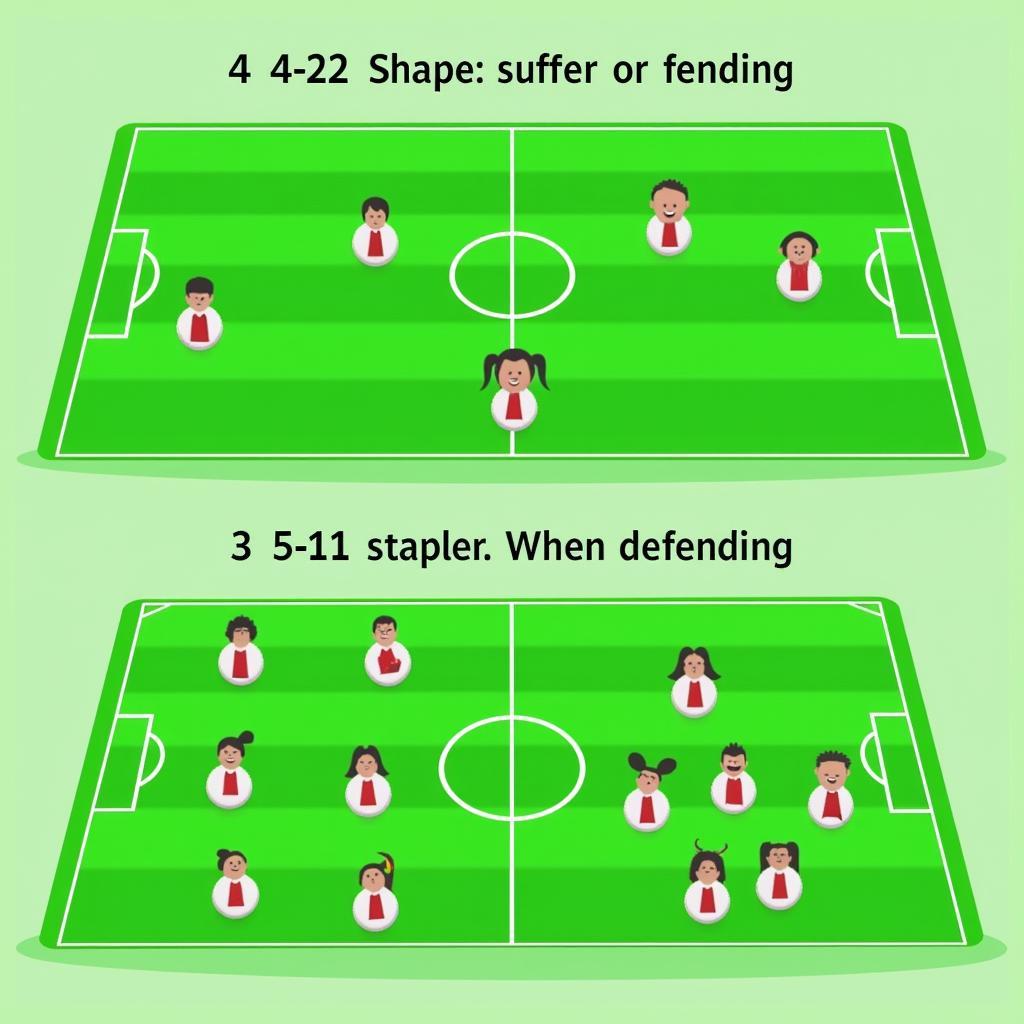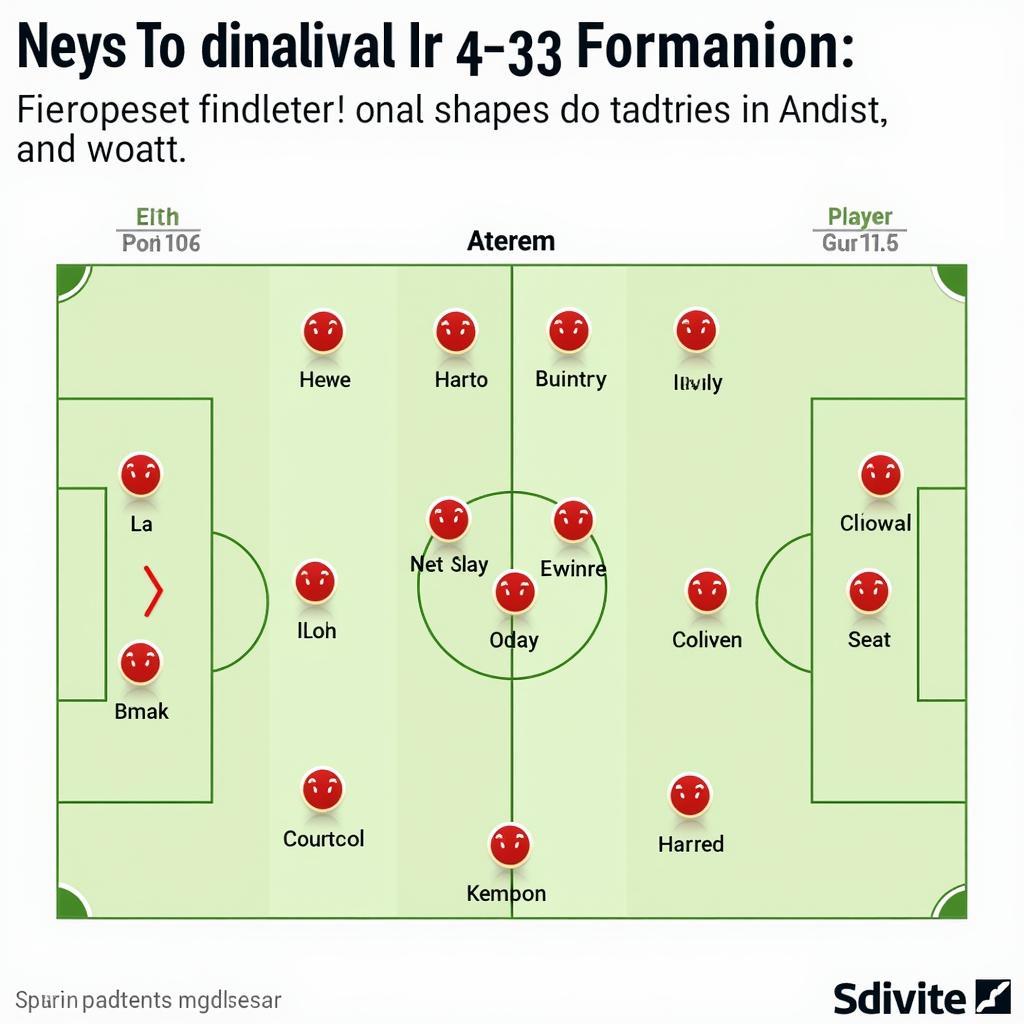Shape and form are two frequently used terms in football analysis, yet their meanings are often blurred. Understanding the difference between Shape Vs Form is crucial for any serious football enthusiast. It helps to dissect tactical setups, predict team performance, and appreciate the intricacies of the beautiful game.
So, what exactly distinguishes shape from form? While both relate to a team’s organization on the pitch, shape refers to the intended structure and positioning of players, often pre-determined by the manager’s tactical plan. Form, on the other hand, represents the actual dynamic arrangement and performance of the players during a match. It can deviate from the intended shape due to various factors such as opponent strategy, individual player performance, and in-game adjustments. This dynamic interplay between shape and form makes football analysis so captivating.
Tactical Shape: The Blueprint of Play
Tactical shape is the theoretical framework that a team aims to maintain. It defines the positions and roles of players, their spacing, and their movement patterns without the ball. Think of it as the coach’s blueprint, designed to exploit opponent weaknesses and control different areas of the pitch. Common shapes include 4-3-3, 4-4-2, and 3-5-2, each with its own strengths and weaknesses. For instance, a 4-3-3 can facilitate quick wing play, while a 4-4-2 might offer greater defensive solidity in midfield. A well-defined shape is the foundation of a team’s tactical approach.
A coach might employ different shapes depending on the opponent and match situation. Against a weaker team, they might opt for an attacking shape like 3-4-3 to maximize offensive output. Conversely, against a stronger opponent, a more conservative shape like 5-4-1 might be preferred to prioritize defensive stability.
Dynamic Form: The Reality on the Pitch
While shape represents the plan, form embodies the execution. It’s the actual arrangement and performance of players during a match, constantly evolving based on the flow of the game. A team might start with a 4-4-2 shape, but the actual form could shift to something resembling a 4-2-4 during an attack, as midfielders push forward to support the strikers. Similarly, when defending, the form could morph into a more compact 4-5-1. This dynamic nature of form is what makes football unpredictable and exciting. Analyzing form requires observing player movement, passing patterns, and individual performances.
Factors like player fatigue, injuries, and tactical changes introduced by the opposing manager can significantly influence a team’s form. For instance, a team’s form could deteriorate in the latter stages of a match due to player fatigue, leading to gaps in their defensive shape and reduced attacking effectiveness. Understanding these influences is key to analyzing match dynamics.
 Biến thể chiến thuật
Biến thể chiến thuật
The Interplay of Shape and Form: A Tactical Dance
The relationship between shape vs form is not static; it’s a continuous interplay, a tactical dance between intention and reality. A team might have a well-defined shape, but if the players are out of form – perhaps struggling with fitness or confidence – the intended shape might not translate into effective performance. Conversely, a team with exceptional individual form might overcome limitations in their tactical shape and still achieve positive results. The ability to adapt shape to maintain form, and vice-versa, is a hallmark of a well-coached team.
Consider a team like Liverpool under Jurgen Klopp. Their preferred shape is often a 4-3-3, known for its high-intensity pressing and quick transitions. However, their actual form on the pitch often reflects a more fluid and dynamic system, with players constantly switching positions and adapting to the opponent’s movements. This ability to maintain their intended shape while allowing for flexible form is a key factor in their success.
 Đội hình Liverpool
Đội hình Liverpool
Conclusion: Mastering the Tactical Vocabulary
Understanding the difference between shape vs form provides a deeper appreciation of football tactics. It’s a fundamental concept for analyzing team performance and predicting match outcomes. By recognizing the intended shape and observing the dynamic form, we can gain valuable insights into the tactical battle unfolding on the pitch. So, the next time you watch a match, look beyond the basic formation and observe the interplay of shape and form – you’ll see a whole new dimension to the beautiful game.
FAQ
- What is the difference between shape and form in football? Shape is the pre-planned structure, while form is the actual arrangement and performance on the pitch.
- How does tactical shape influence team performance? Shape provides a framework for player positioning and movement, impacting both attack and defense.
- What factors can affect a team’s form during a match? Opponent tactics, individual player performance, fatigue, and injuries can all influence form.
- Why is it important to understand both shape and form? It provides a deeper understanding of tactical nuances and helps predict match outcomes.
- Can a team with a weaker shape still outperform a team with a stronger shape? Yes, if their individual form and teamwork are superior.
Need assistance? Contact us at Phone Number: 02838172459, Email: truyenthongbongda@gmail.com Or visit us at: 596 Đ. Hậu Giang, P.12, Quận 6, Hồ Chí Minh 70000, Việt Nam. We have a 24/7 customer service team.